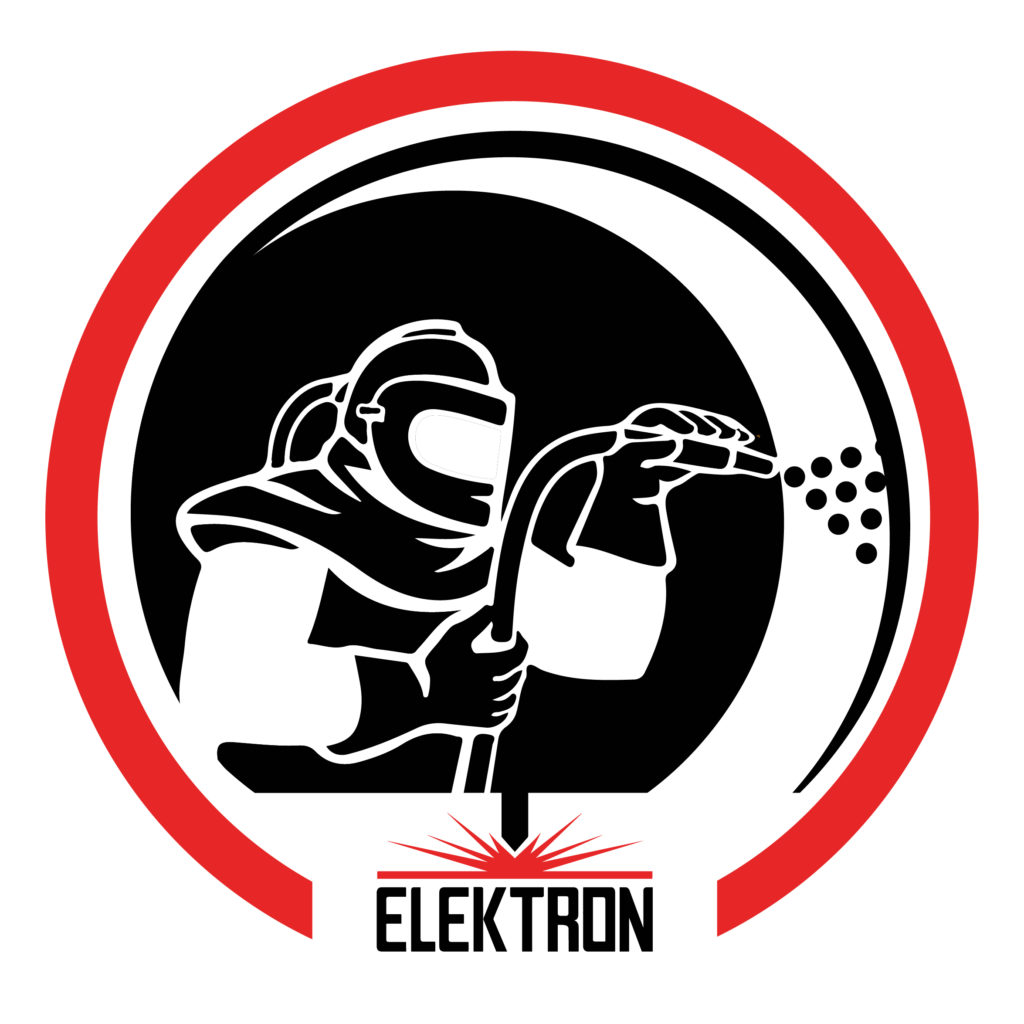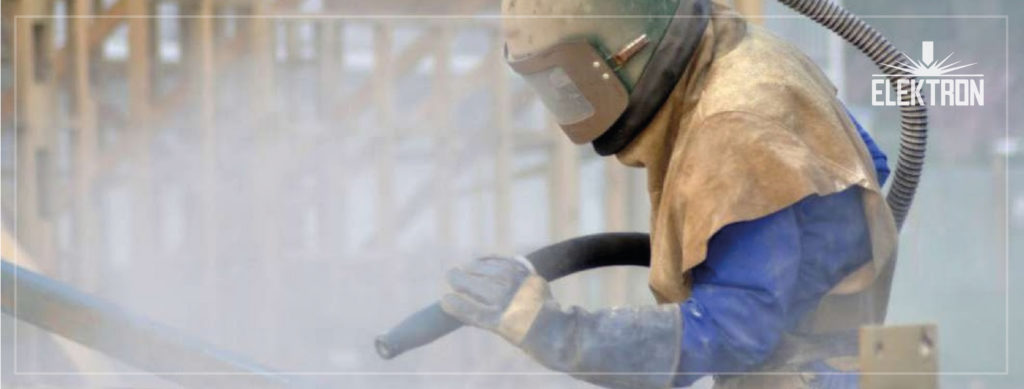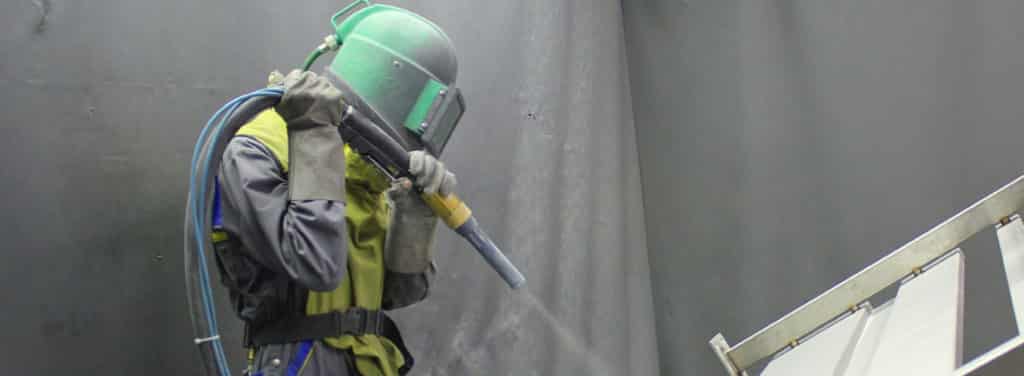Abrasive blastings

Sandblasting of solid elements
Abrasive blasting,” more commonly known as “sandblasting,” is based on the force that drives a stream of abrasive material onto a surface under high pressure to smooth rough surfaces, shape the surface, or remove surface contaminants. Fluid under pressure, usually compressed air or a centrifugal wheel is used to drive an explosive material (often called media).
- The process of cleaning or shaping any surface with an abrasive in a stream of compressed air or liquid. The sanding effect is similar to grinding, but the surface being cleaned is straighter and obtains the roughness required for painting, and there are no problems with cleaning hard-to-reach corners or curves. Other sufficiently ground materials can also be used for sandblasting: copper slag, shot, glass, metal, dry ice, pomegranates (mineral), slag, and even ground pieces of coconut shells and other plants, which allows a specific appearance of the treated surface.
- What is sandblasting of elements and why DO we sandblast steel elements
The effect obtained during sandblasting can be compared to grinding. By using sand, you can also get a straighter surface ready for further processing immediately after cleaning. The sandblasting process gives the appropriate roughness, which improves paint adhesion.
When we sand a metal surface, it is possible to get rid of various damages caused by corrosion. Sandblasting not only removes impurities but also improves the condition of the metal caused by weather conditions. Sandblasting can be used to remove rust from metal products and constructions such as cars, railings, heaters, or other hard-to-reach places. Very often, it turns out to be the best and most effective way to get rid of the corrosion layer. Sandblasting smooths the surface thoroughly and perfectly prepares the surface for paint or other covering products. In the sandblasting process, you can also effectively get rid of layers of varnish, paint, or various coatings. This process is also used for the renovation of wooden structures or the treatment of decorative elements, for the renovation of bridges, fountains, and monuments. Using the sandblasting process, you can also clean the walls of dirt, stains, or sediments. It also removes graffiti, algae, and other exaggerations. However, it should be remembered that the use of this process in the case of old and fragile walls is not appropriate.
The most important things while using the sandblasting process are the use of an appropriate abrasive and the highest quality gun, as well as advice on the abrasive used. When preparing sand, it is particularly important to grind and clean it properly. We will provide comprehensive service through our experienced employees and use the best equipment. Therefore, we guarantee the speed of the service and the best quality.



